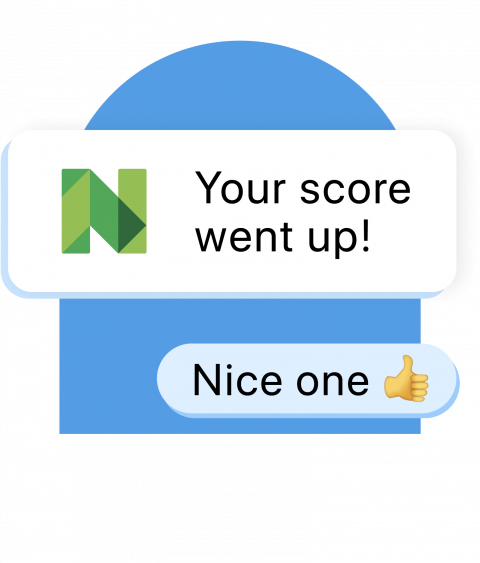The 15/3 Credit Card Hack Is Nonsense — Here’s What to Do Instead

Many or all of the products featured here are from our partners who compensate us. This influences which products we write about and where and how the product appears on a page. However, this does not influence our evaluations. Our opinions are our own. Here is a list of our partners and here's how we make money.
Sometimes a grain of truth about a financial topic can morph into something that’s just plain misleading. One example is the 15/3 credit card payment trick — or hack — that you might have seen touted on the internet and social media as a secret tactic for improving bad or mediocre credit.
The 15/3 hack claims you can help your credit score dramatically by making half your credit card payment 15 days before your account statement due date and the other half-payment three days before. Problem is, it doesn't work.
“Every few years some nonsense like this gains some momentum, but there's no truth to it,” John Ulzheimer, an Atlanta-based credit expert, said in an email. Ulzheimer has worked for FICO and the credit bureau Equifax.

The number of payments you make in a credit card billing cycle — a month — does not help your number of on-time payments, a factor in widely used credit-scoring models. You’ll get credit for just one on-time payment during that month. And there’s nothing magical about 15 days and three days before your due date. In fact, it’s too late by then. At 15 days before your due date, your statement is already closed and your credit card company has likely already reported your information to the credit bureaus.
(To be fair, some also claim the rule is 15 days and three days before your statement closing date. Targeting the statement closing date at least makes a little sense, as we’ll see later — but the 15 and 3 are still irrelevant.)
What is true about credit card payments and what can help? Making multiple payments in a month could help your credit scores temporarily by making it look like you’re using less credit, but not in the way the 15/3 hack describes.
The U.S. credit-scoring system is objectively confusing, so it’s no wonder some people are misguided in promoting the 15/3 myth. But here’s what’s wrong with the 15/3 credit card hack and what really helps your credit scores.
While we’re myth-busting, let’s address one of the biggest falsehoods in credit cards: Credit scores are helped by carrying a monthly balance and paying interest. This is false. Period. Paying interest is not a factor in credit scoring. The best advice is always the same, and that's to pay your balance in full every month if you can.
What the 15/3 credit hack claims
One YouTuber, for example, made a 20-minute video touting the 15/3 system, saying she was told it could elevate her credit score 100 points in three or four months. But that's just one among numerous blog posts and TikTok videos claiming 15/3 is a secret sure-fire method for elevating credit scores.
We weren’t able to identify the originator of the 15/3 credit card payment method, but this is generally how it is retold. Your credit scores will supposedly grow significantly if you:
Make half a payment 15 days before your credit card due date. If your payment is due on the 15th of the month, pay it on the 1st.
Pay the second half three days before the due date.
Some versions of the 15/3 rule swap in statement closing date for payment due date. The statement closing date comes about three weeks before the payment due date. Targeting the closing date could mean making three payments.
Make a payment 15 days before the statement closing date. (Not necessarily half because you don’t yet know what half is. You’re still using the card during the billing cycle.)
Make a payment three days before the statement closing date.
Pay off whatever is left after the statement closing date but before the due date so you don’t pay late fees or interest. This amount would be whatever you charged during the final three days of the billing cycle.
Why the 15/3 credit hack is wrong
The main problems with the 15/3 hack:
Wrong date peg. Typically, on or near your statement closing date — not the payment due date — your credit card company reports to the credit bureau or bureaus with such information as your balance and credit limit. It does this only once a month. Your due date comes about three weeks after that. So targeting the due date makes no sense. Making a payment 15 days and three days before the credit card due date, as the 15/3 hack suggests, is too late to influence credit reporting for that billing cycle.
Multi-payment myth. You don’t get extra credit, so to speak, for making two payments instead of one, or making a payment early. Your creditor only reports to the bureaus once a month.
15/3 is random. If you use the 15/3 definition pegging payments to your closing date, that can help, for reasons we'll discuss below. But 15 and 3 are irrelevant. You might as well make a single payment prior to the closing date. The creditor is just reporting what your balance is at the end of the billing cycle.
“There's no relevance to when you make the payment or payments prior to the statement closing date,” Ulzheimer said. “You can make a payment every single day if you like. Fifteen and three days doesn't do anything different than paying it off one or two days before the statement closing date.”
What’s the truth?
The grain of truth in the 15/3 hack is that credit utilization matters to credit scores.
Credit utilization is simply how much credit you’re using vs. how much credit you have. Scoring models award you a higher score if you have lots of available credit, but use very little of it.
“Your credit score is a snapshot in time reflecting your creditworthiness. Purposefully lowering your utilization on a certain date is like applying lipstick before the photo is taken.”
Your credit score is a snapshot in time reflecting your creditworthiness. Purposefully lowering your utilization on a certain date is like applying lipstick before the photo is taken.
But your effort to pretty-up your utilization only lasts one month — until the next month when your creditors report your balances and limits again and you have a new utilization ratio. So unless you were going to apply for a loan or otherwise needed to show a handsome credit score on a specific date, your effort was wasted.
It’s like you put on a fine suit but sat home alone. Nobody saw it, or cared.

Credit utilization ratio details
For a single credit card, the relevant dollar figures are your last-reported balance compared with your last-reported credit limit. If you’re using $1,000 of a $2,000 credit limit on the card, you have a 50% credit utilization, which is considered somewhat high.
Generally, credit scores react best to utilization below 30%, and below 10% is ideal. With our example of a $2,000 credit limit, that means keeping your balance under $600 or $200, respectively. Of course, that’s not possible for everybody, especially not for those with relatively low credit limits. A $500 credit limit can get used up fast in a month.
Credit utilization accounts for nearly one-third of your credit score — 30% in the popular FICO score model. So lowering your utilization can, indeed, polish your scores. But with credit cards, your utilization bounces up and down during the month as you make charges and pay them off.
Overall, the 15/3 hack attempts to make your utilization look better, which is a fine goal and standard advice. It just misses the mark by offering the wrong time peg and irrelevant numbers of days before that time peg.
“This is neither novel nor some sort of a secret hack to the scoring system,” Ulzheimer said.
What really helps your credit score
Your credit score is affected by these factors, and generally in this order of importance, according to FICO:
Payment history.
Credit utilization.
Length of credit history.
Mix of credit types.
Recent applications for credit.
While the 15/3 hack won’t help your credit directly, it could indirectly if it keeps you disciplined to pay your credit card bill on time. Or, for example, maybe it helps you time your payments to coincide better with your paychecks.
But paying early according to the 15/3 rule generally has no merit.
“The truth is paying your bill before the due date will never, ever increase your scores by some drastic amount,” Ulzheimer said.
Find the right credit card for you.
Whether you want to pay less interest or earn more rewards, the right card's out there. Just answer a few questions and we'll narrow the search for you.


